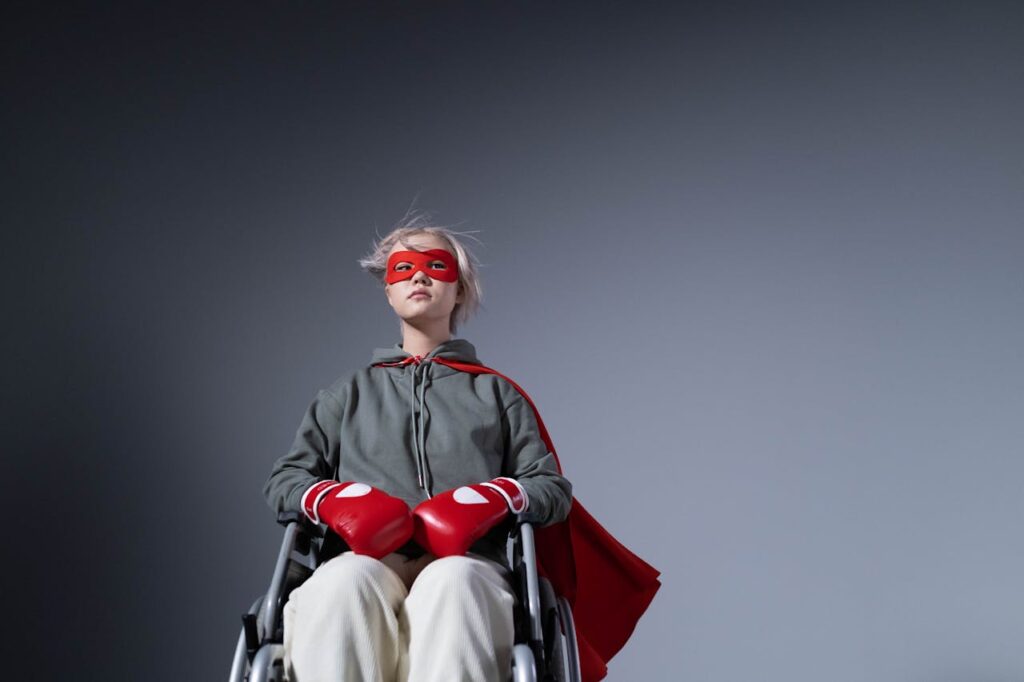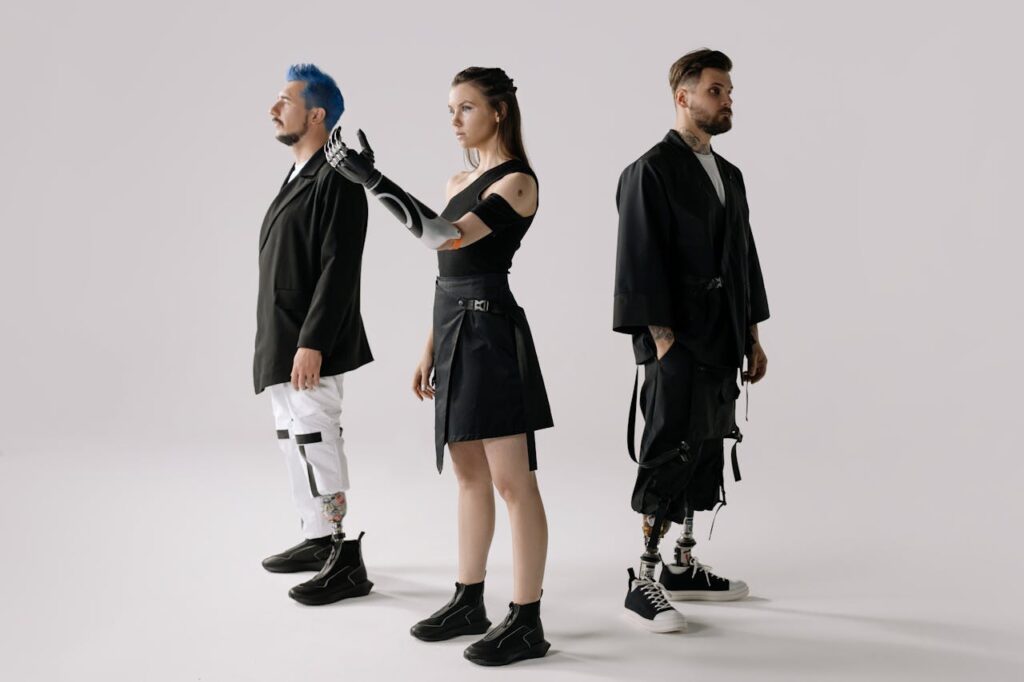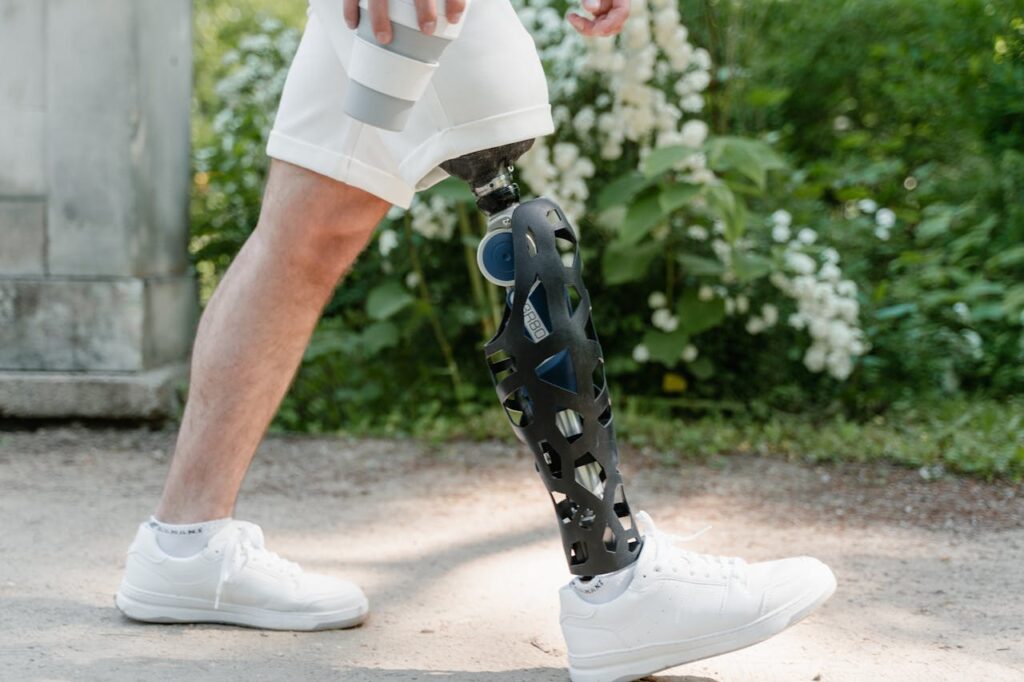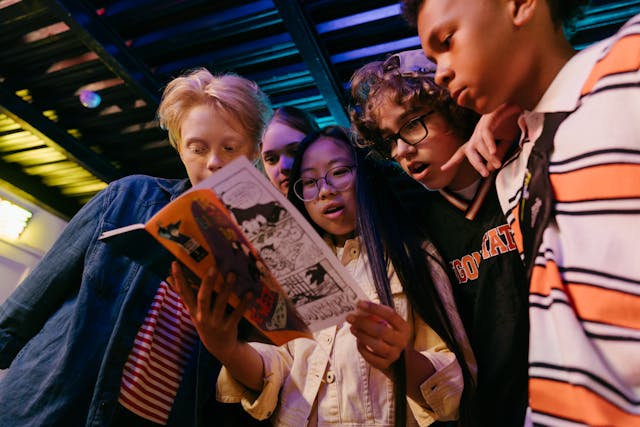Prosthetics have always been a source of fascination in fiction, especially in anime and comics. These stories often portray characters with high-tech robotic limbs, offering them superhuman strength, agility, and even built-in weapons. But how close are these fictional prosthetics to reality? In the real world, prosthetic technology has advanced significantly, helping people regain independence and mobility. However, it is quite different from the over-the-top enhancements we see in our favorite stories. Let’s explore the differences and similarities between prosthetics in anime and comics versus real-life prosthetic advancements.
The Power of Prosthetics in Fiction
Fictional prosthetics often go beyond restoring lost function and instead enhance a character’s abilities far beyond human limits.
Superhuman Abilities and Beyond

One of the most common tropes in anime and comics is that prosthetic limbs give characters extraordinary powers. These limbs often go beyond replacing lost function; they enhance it. For example, in anime like Fullmetal Alchemist, Edward Elric’s automail arm is not only a fully functional replacement but also incredibly strong, allowing him to break walls and engage in high-intensity combat. Similarly, in Cyberpunk: Edgerunners, mechanical arms provide superhuman speed and reflexes.
Real-life prosthetics, while incredibly advanced, do not grant such extreme enhancements. Modern prosthetic limbs, like our own Grippy™ bionic hand, focus on restoring natural movement and function. They do not enable someone to lift cars or perform superhuman feats, but they do offer users independence and control, which can feel just as powerful in real life.
Instant Adaptation vs. Real-Life Training
In anime and comics, characters with prosthetics often seem to adapt instantly. They wake up with their new limb and immediately wield it with precision, as if they have been using it their entire lives. This is seen in characters like Bucky Barnes from Marvel Comics and Guts from Berserk, who handle their powerful mechanical arms effortlessly.
In reality, prosthetic adaptation takes time. A person using a prosthetic limb must go through training and rehabilitation to regain full use. At Robobionics, we provide gamified rehabilitation to help users adapt faster, but it still requires patience and practice. Unlike fiction, real-life users must learn to control muscle signals, understand grip patterns, and become comfortable with their new limb through daily use.
Unbreakable Durability vs. Real-Life Wear and Tear
Anime and comic book prosthetics are often portrayed as nearly indestructible. Characters take massive hits, fall from great heights, or engage in battle, yet their prosthetics remain intact. This level of durability, while entertaining, does not reflect real-world technology.
Real prosthetics, while built to last, require regular maintenance. Components can wear out, and users must take care of their devices to ensure longevity. Our prosthetic limbs at Robobionics are designed to be durable and comfortable, but like any high-tech device, they need occasional servicing to maintain optimal function. Unlike in fiction, a prosthetic does not self-repair or get instantly replaced after damage.
Advanced Technology: Fiction vs. Reality

While fictional prosthetics often seem limitless, real-world advancements are more focused on practicality and improving daily life.
Mind-Controlled Prosthetics in Fiction
Many futuristic anime and comic book prosthetics are controlled directly by the user’s mind, allowing for seamless movement. Characters like Genos from One Punch Man and Cable from Marvel Comics use neural-controlled bionic arms that respond instantly to their thoughts.
In real life, mind-controlled prosthetics do exist, but they are still in the early stages of development. At Robobionics, we incorporate myoelectric technology, which allows users to control prosthetic hands using muscle signals. While this is a step toward brain-controlled prosthetics, the seamless, instant control seen in fiction remains a long-term goal for scientists and engineers.
Built-In Weapons vs. Practical Enhancements
A common theme in fiction is that prosthetic limbs come with built-in weapons or tools. From Metal Gear Solid’s Venom Snake using an arm cannon to characters with hidden blades and energy blasters, these fantasy prosthetics make for exciting action sequences.
In reality, prosthetics are designed with practicality in mind. The goal is to improve the user’s quality of life, not add combat abilities. Advanced prosthetics today offer multi-grip functionality, lightweight materials, and ergonomic designs to ensure comfort and efficiency. While researchers are working on integrating more features, such as touch sensitivity and better grip control, real-life prosthetics focus on usability rather than combat.
Cybernetic Enhancements vs. Realistic Functionality
Many anime and comic book characters with prosthetics look completely futuristic, blending seamlessly with the body. Cybernetic limbs with glowing lines and retractable features are common in cyberpunk-themed series like Ghost in the Shell and Alita: Battle Angel.
Real-life prosthetics have come a long way in terms of aesthetics and functionality, but they are not as seamlessly integrated as in fiction. Customization options do exist, and at Robobionics, we offer prosthetic designs that feel natural and comfortable. However, we prioritize function over flashy appearances, ensuring users get the best experience without unnecessary complications.
The Emotional Journey: Fiction vs. Real Life

The emotional impact of losing a limb and adapting to a prosthetic is explored differently in fiction and real life.
Overcoming Trauma and Emotional Strength
Many anime and comic characters with prosthetics have tragic backstories, losing their limbs in battles or accidents. Their journey often revolves around revenge, redemption, or proving their strength. Edward Elric, for example, views his automail as a symbol of his determination to restore what was lost.
In real life, losing a limb is an emotional journey, and the focus is on regaining independence rather than seeking revenge or proving oneself. At Robobionics, we work closely with users to provide emotional and practical support, helping them embrace their prosthetics as a tool for empowerment, not as a reminder of loss.
The Role of Support Systems
In anime and comics, characters with prosthetics often have a mentor or a skilled technician who maintains their advanced limbs. Winry Rockbell in Fullmetal Alchemist and Dr. Ito in Alita: Battle Angel are examples of dedicated prosthetists who provide care and upgrades.
Real-life prosthetic users also require ongoing support. From prosthetists and physiotherapists to support groups and family members, having a strong network makes adaptation easier. At Robobionics, we ensure that our users have access to continuous support, from initial fittings to long-term maintenance.
Personalizing the Prosthetic Experience
In fiction, prosthetics are often highly personalized, reflecting the character’s personality and needs. Some have artistic designs, while others incorporate unique features that match their fighting style or abilities.
In reality, prosthetic customization is also possible. At Robobionics, we offer personalized solutions to match individual preferences. From skin-tone-matching covers to functional grips suited for specific tasks, we help users feel comfortable and confident in their prosthetic journey.
The Future of Prosthetics: Bridging the Gap Between Fiction and Reality

As technology advances, the gap between fictional prosthetics and real-life ones continues to shrink. Scientists and engineers are working tirelessly to develop prosthetic limbs that are more intuitive, functional, and lifelike.
Sensory Feedback: Feeling Through a Prosthetic Limb
In many anime and comics, characters with prosthetic limbs can feel sensations just like they would with a natural arm. Whether it’s pain, temperature, or pressure, these fictional limbs seem almost indistinguishable from real human flesh.
In real life, prosthetics with sensory feedback are in development. Researchers are exploring ways to integrate sensors that send signals to the nervous system, allowing users to feel touch, pressure, and even pain through their artificial limbs. At Robobionics, we are closely following advancements in this field, as incorporating sensory feedback will be a game-changer for prosthetic users. Though we are not quite at the level of anime-like realism yet, the future is bright.
Self-Repairing and Regenerating Prosthetics
Another fascinating idea in fiction is the concept of self-repairing or regenerating prosthetics. Some characters in anime and comics have limbs that heal themselves, upgrade automatically, or even regenerate like living tissue.
While real-world prosthetics cannot heal themselves, researchers are experimenting with self-repairing materials. Scientists are developing bioengineered limbs and robotic components that can detect damage and repair small cracks or malfunctions. Though still in early stages, these advancements could one day lead to prosthetics that last much longer and require less maintenance.
Merging Man and Machine: The Rise of Bionic Integration
Cybernetic enhancements in fiction often involve seamlessly merging prosthetics with the human body. These limbs are fully integrated, moving with natural ease and sometimes even connecting to the brain for instant control.
In reality, bionic integration is progressing rapidly. Neural interfaces are being tested to allow direct brain control over prosthetic limbs, much like we see in sci-fi worlds. While these technologies are still experimental, the idea of a fully integrated bionic limb is closer than ever. At Robobionics, we are excited about the future and how these innovations can improve the lives of those using prosthetics.
Cultural Influence of Prosthetics in Anime and Comics

Prosthetics in anime and comics are more than just functional replacements or futuristic enhancements; they often symbolize deeper themes related to identity, resilience, and human potential. These fictional portrayals have influenced how society perceives prosthetic users and how real-world technology evolves.
Symbolism of Prosthetic Limbs in Storytelling
In many anime and comics, prosthetic limbs represent more than just physical recovery—they are symbols of transformation, loss, and personal growth. Characters like Edward Elric (Fullmetal Alchemist) and Guts (Berserk) undergo emotional and psychological journeys tied to their prosthetics. Edward’s automail represents his determination to fix past mistakes, while Guts’ mechanical arm embodies his relentless will to survive.
In real life, prosthetics also carry deep personal meaning. For many users, their prosthetic limb is not just a tool but a part of their identity. At Robobionics, we recognize the importance of personalization, allowing users to customize their prosthetic limbs in a way that makes them feel empowered.
Impact on Public Perception and Acceptance
Fictional characters with prosthetics have helped shape public perception of disability and rehabilitation. When audiences see powerful and independent characters like Bucky Barnes (Marvel Comics) or Alita (Alita: Battle Angel), they associate prosthetics with strength rather than limitation. This positive representation helps reduce stigma and promotes inclusivity.
In real life, individuals using prosthetics are challenging outdated stereotypes. With modern prosthetic advancements, people are engaging in sports, arts, and careers that were once thought to be difficult for amputees. As more accurate and empowering depictions emerge in media, society continues to embrace diversity and innovation.
Inspiring Real-World Technological Advancements
Fiction has always influenced technological progress, and prosthetics are no exception. Many of today’s most advanced prosthetic designs draw inspiration from science fiction and anime. Engineers and designers often look to cyberpunk aesthetics and anime-inspired designs when creating next-generation bionic limbs.
At Robobionics, we stay informed about cutting-edge developments and futuristic concepts. While we focus on practical solutions for users, we are inspired by the creativity of fictional prosthetics and the potential they suggest for the future.
The Role of Customization: Fiction vs. Reality

One of the most exciting aspects of prosthetics in both anime and real life is the ability to customize them. Whether for aesthetics, function, or personal expression, customization plays a crucial role in how prosthetics are perceived and used.
Unique Designs in Anime and Comics
In anime and comics, prosthetic limbs are often highly stylized, reflecting the personality and abilities of the character. Edward Elric’s automail in Fullmetal Alchemist is sleek and metallic, making it look like an extension of his fighting style. In Ghost in the Shell, Major Kusanagi’s cybernetic body is perfectly designed for agility, speed, and combat. Characters in Cyberpunk: Edgerunners have neon-lit, highly modified cybernetic limbs that make them stand out in a futuristic world.
These fictional designs emphasize individuality and often make prosthetic limbs appear as enhancements rather than replacements. They are crafted to be eye-catching and fit into the world-building of their respective stories.
Real-Life Customization for Comfort and Identity
In the real world, prosthetic customization is just as important, though the focus is more on comfort and functionality. At Robobionics, we understand that every user is unique, and their prosthetic should reflect that. Many users opt for cosmetic covers that match their skin tone, while others prefer a futuristic, robotic aesthetic. Some even choose artistic or patterned designs that reflect their personality.
Beyond aesthetics, functional customization is key. Different users have different needs, whether it’s a prosthetic hand with multiple grip modes for various tasks or a leg prosthesis optimized for running or swimming. By tailoring prosthetics to individual lifestyles, we ensure that users get the most out of their devices.
Blending Fashion and Function
One trend emerging in both fiction and real life is the blending of prosthetics with fashion. In the anime Vivy: Fluorite Eye’s Song, android characters have sleek, beautifully designed cybernetic limbs that integrate seamlessly with their appearance. In reality, prosthetic users are redefining fashion by embracing the look of their devices. High-tech materials, 3D-printed designs, and even LED-lit prosthetics are becoming more common.
At Robobionics, we believe that prosthetics should not just be tools but also expressions of identity. Whether someone wants a natural-looking limb or a bold, futuristic design, we support their vision. After all, a prosthetic limb is not just a replacement—it’s a statement of strength and individuality.
Conclusion
While anime and comics often exaggerate prosthetic capabilities for dramatic effect, they do inspire curiosity and innovation in real life. Although we may not have superhuman limbs or instant adaptability, modern prosthetics have revolutionized the way people regain independence. At Robobionics, we are dedicated to making advanced, functional, and user-friendly prosthetics accessible to everyone. If you or a loved one are looking for a prosthetic solution, book a free demo with us today and experience the future of prosthetic technology firsthand!



